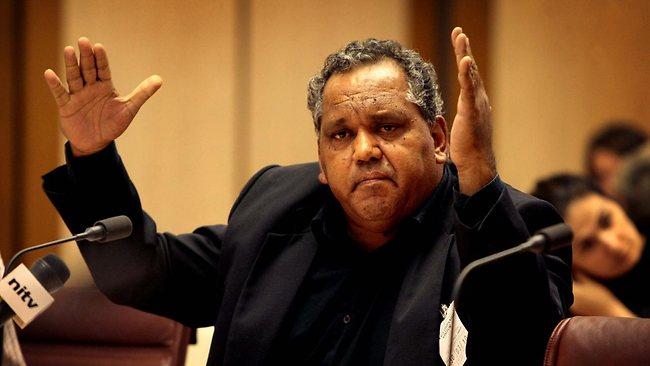Noel Pearson is Tony Abbott's man to fix schools
TONY Abbott has approached Cape York indigenous leader Noel Pearson to review the education of all disadvantaged and impoverished children.

TONY Abbott has approached Cape York indigenous leader Noel Pearson to review the education of all disadvantaged and impoverished children and explore rolling out the direct instruction teaching model in schools across the nation.
The Weekend Australian has learnt that the Opposition Leader wants to overhaul the education of disadvantaged indigenous and non-indigenous children using the teaching approaches adopted by schools in Cape York.
A senior source said Mr Abbott had been discussing with Mr Pearson for some time taking a key role with a Coalition government to work with low-performing schools.
If Mr Pearson accepts the appointment, it would make him the Coalition's third high-profile indigenous-policy recruit, after former ALP president Warren Mundine and mining magnate Andrew Forrest were hand-picked by Mr Abbott to lead changes in overall policy, in the case of Mr Mundine, and employment policy for Mr Forrest.
A source told The Weekend Australian Mr Abbott had intended announcing the role for Mr Pearson on a visit to Cape York during the election campaign. Mr Pearson has written a blueprint for improving schools, outlining eight principles of reform based on the experience of the three schools, at Aurukun, Hope Vale and Coen, that form the Cape York Aboriginal Academy.
The eight principles are: embedding sustainable reform in schools; effective instruction as the keystone of reform; giving high-performing schools the right people as teachers, developed into effective instructors who teach every student; staged autonomy according to the performance of the school; introduce direct instruction in targeted schools; extra-curricular programs in indigenous schools; universal use of proven teaching materials; and developing instructional leaders in each school.
In the manifesto, Mr Pearson argues the approach will "close the educational gap and return Australia to the top tier globally within a decade".
It sets out a process for a staged series of interventions depending on the performance of the school, using uniform and rigidly controlled teaching methods in low-performing schools but granting schools greater autonomy as their performance improves.
The approach will put a poor-performing school on the trajectory to become a good school, and a good school to become a great school, and break the cycle of low performance.
"Education reform has fallen victim to fashion, ideology and intuition at the expense of robust, evidence-based policy," it says. "Policy is being directed at what can change, not what should change."
Mr Pearson's blueprint says schools fail many students because of teaching approaches that teach to the middle-range of ability, leaving the weak to fall further behind and failing to extend the top students. He argues effective teaching "immunises a whole class against falling behind" and is the keystone to educational reform.
It requires explicit instruction that teaches each student at their individual level, presenting information in a structured, systematic and sequenced way, and ensures the student has mastered the knowledge and skill before presenting any new information.
One approach proven in research as one of the most effective methods is the US-developed direct instruction, or DI, which the blueprint says "can lift the quality of classroom teaching far quicker than any reform to the lift the quality of individual teachers".
The blueprint stipulates DI be introduced in target schools, including those teaching indigenous students, low socioeconomic schools, for non-English speaking students, and remote schools.
Mr Pearson supports DI over other explicit instruction methods because it is not a remedial teaching program for students struggling in specific skills, but a program for teaching the whole curriculum, including teaching materials, that stretches the most able students and prevents weak students from falling behind.
DI provides scripted lessons that teachers must recite word-for-word to ensure clear instruction and removing a very common source of student confusion.
DI stresses students must master each concept before they are introduced to the next one, and only about 15 per cent of material presented in each lesson is new material with the bulk of lesson time devoted to reinforcing previous material.


